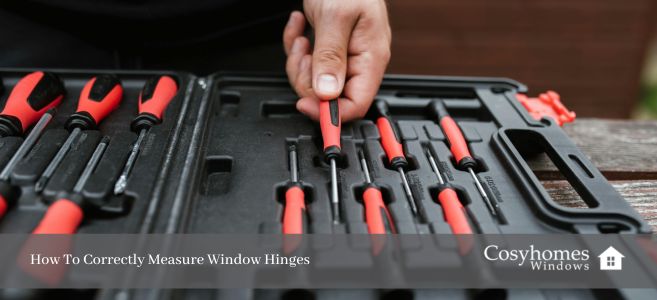Knowing how to measure window hinges is important when making replacements, installing, or performing a maintenance check.
In this article, we examine how to identify the different types of window hinges, the tools required to measure them, and how to avoid common measuring mistakes.
Understanding Window Hinges
Window hinges vary depending on the length of the hinge, the type of window and the material used. Common types include standard hinges for traditional windows, double-glazed hinges for windows with double panes, and UPVC hinges for UPVC windows. It’s important to ensure that you match the correct hinge type for replacement due to:
- Compatibility: Different hinges are designed for specific window materials and styles, ensuring proper fit and function.
- Functionality: Each hinge type is designed to provide optimal performance, ensuring smooth operation and proper sealing.
- Energy Efficiency: Using the right hinge maintains insulation properties, contributing to energy efficiency.
- Safety and Security: Properly matched hinges enhance window stability and security, preventing potential vulnerabilities.
Tools Required for Measuring Hinges
When replacing window hinges, you will need several tools for accurate window hinge measurements. These include:
- Tape Measure: Essential for measuring hinge dimensions and screw hole spacing accurately.
- Screwdriver: Used to remove existing hinges and facilitate measurement and replacement.
- Pencil or Marker: Helps mark measurement points on window frame and hinges for alignment.
- Level: Ensures proper alignment of window frame and hinges during measurement.
- Paper and Pen: Record measurements and notes for reference during installation.
These tools work together to ensure precise measurements, which are crucial for successful hinge replacement or installation.
How to Measure Window Hinges
Follow our step-by-step guide on how to measure window hinges accurately:
1. Identify Hinge Type and Gather Tools:
- Identify the hinge type and window frame material.
- Have your tape measure, screwdriver, pencil, level, and paper to write on to hand.
2. Remove Existing Hinges (if needed):
- Use a screwdriver to carefully remove existing hinges, noting orientation.
3. Measure Hinge Length, Width, and Screw Hole Spacing:
- Use a tape measure to determine dimensions and screw hole spacing.
- Measure from outer edges and record measurements.
4. Assess Offset and Stack Height (if applicable):
- Note any offset or stack height for hinge operation.
5. Record Measurements and Consider Frame Compatibility:
- Record measurements and frame thickness.
- Ensure compatibility for replacement hinges.
6. Double-Check Measurements and Align (if necessary):
- Double-check all measurements and alignment.
- Use a level for proper alignment if installing new hinges.
Following these steps will ensure accurate measurements for successful window hinge replacement or installation. Adjust techniques for different hinge sizes and frame types as needed.
If you are still unsure after reading this guide or have attempted an unsuccessful replacement, don’t hesitate to contact us at Cosyhomes Windows. We offer a range of window repairs and servicing and can advise you on the best course of action.
Common Mistakes to Avoid When Measuring Window Hinges
Some common mistakes can be easily avoided when it comes to measuring window hinges, including:
- inaccurate measurement technique
- incorrect identification of hinge type
- failure to account for frame compatibility
- neglecting to note screw hole spacing
- not recording measurements.
Conclusion
Measuring window hinges accurately is essential for seamless replacement or installation. Failure to do so will directly impact window operation, security, and energy efficiency. Overlooking precise dimensions and alignment can lead to operational issues and compromised performance.
If in doubt, it is always best to consult experienced professionals and we are happy to provide further assistance.
















